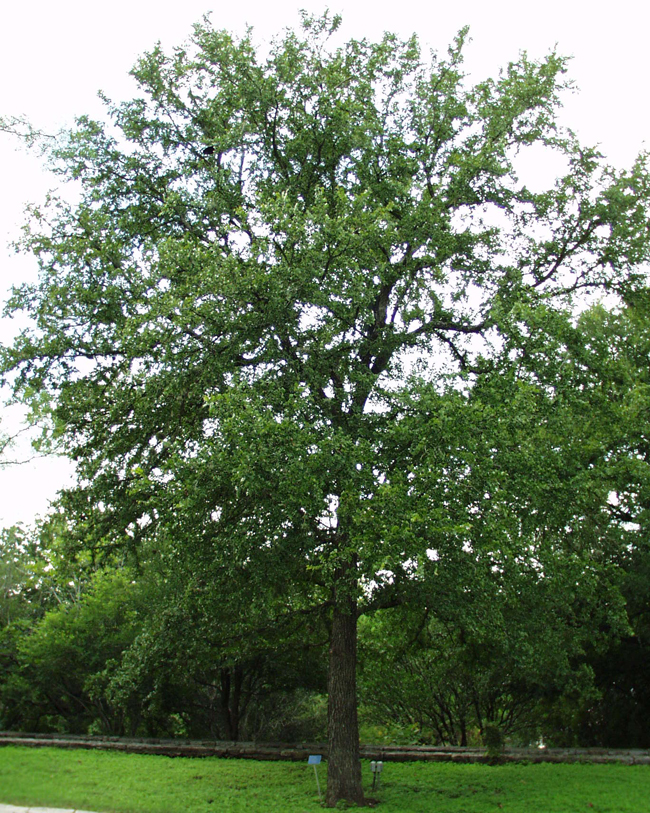Ulmus crassifolia
Cedar Elm, Fall Elm, Basket Elm, Scrub Elm, Lime Elm, Texas Elm, Southern Rock Elm, Olmo

Photo by M. Ritter, W. Mark and J. Reimer courtesy of SelecTree
Ulmus crassifolia, cedar elm, is a large semi-evergreen tree with luscious green foliage that changes to yellow in the fall. It is drought-tolerant and prefers partly shaded or sunny areas with dry soil. Tree should be monitored for invasiveness as its seeds germinate rapidly.
Susceptible to Dutch Elm disease. Potential allergen. Seeds germinate readily, monitor for invasiveness.
Excellent potential utility as an urban tree based on evaluation of 23 trees, healthy crown, 100% survival, very fast growth rate. Herbivory and signs of leaf dieback on a few individuals. Trees have a fast growth rate in the nursery. In the fall trees produce an attractive purple foliage. This species needs to be monitored for potential invasiveness.
We got near 100% germination with 40 day cold stratification in moist peat in plastic bag in refrigerator as well as with fresh seed greenhouse sown. Field trials will monitor for invasiveness potential. Seedlings are very fast growing.
